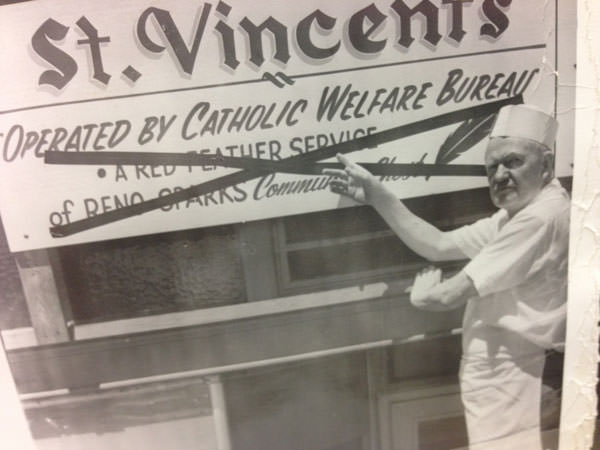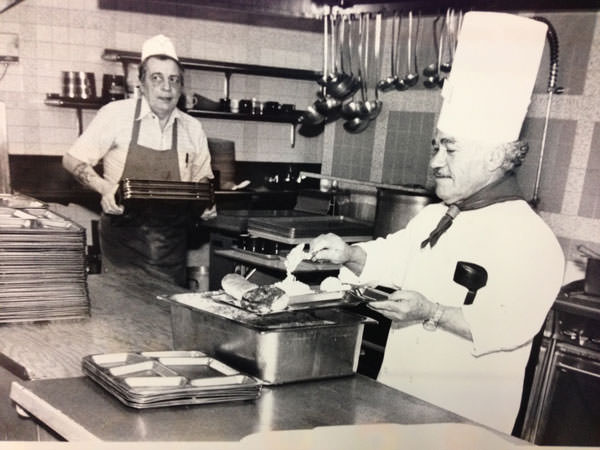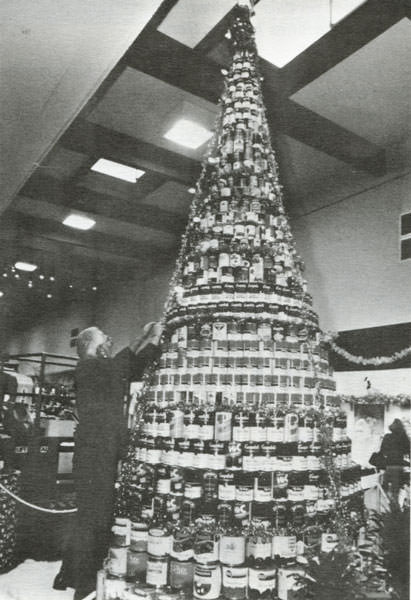Historical Sustenance
St. Vincent’s and The Salvation Army feed Reno’s hungry.
Written by Sharon Honig-Bear
Photos courtesy of Nevada Historical Society
There’s never been a magic wand when it comes to feeding the hungry, but there have been two organizations working a kind of magic for decades: The Salvation Army and Catholic Charities of Northern Nevada. In place of wizardry and spells, they have reached out to the underfed with decades of commitment and inspiring community support.
The Salvation Army marches in
The 1920s were hard throughout the United States, and as described in the Reno Evening Gazette on Feb. 6, 1928, “The Salvation Army has undertaken to relieve the situation somewhat by opening a soup kitchen at its headquarters at 510 Sierra St. where free meals will be served from 11 o’clock each day. The organization is prepared to act as Reno’s ‘human service station.’”
By 1929, the Great Depression spread across the nation. The Washoe County Commissioners passed a resolution to provide $300 a month for the maintenance of a soup kitchen by The Salvation Army. Despite the depression lasting 10 years, Northern Nevada was lightly affected.
A Nevada State Journal editorial on May 20, 1932, touted, “Reno doesn’t know what depression means. We have no bread lines nor soup kitchens and no poverty so noticeable as in other sections of the country.”

The kitchen staff at the original St. Vincent’s Dining Room
Depression brings change
The federal government recognized food insecurity during the depression. A large part of the American workforce was unemployed, and farmers struggled to pay off loans. In 1932, Congress implemented a program to purchase surplus wheat and other food supplies and to donate them to hunger relief charities. The initiative also kept farm production high. During the following decades, the federal government instituted additional food support networks, leading to food stamps and the National School Lunch Program.
Soup kitchen reborn
The opening of St. Vincent’s Dining Room was a big advance for Reno’s hungry, providing a dependable, free restaurant. First established in 1961, the dining room grew from a soup kitchen into a full-scale program that provides hot, nutritious, cafeteria-style meals to all who are hungry. More than 3 million meals have been served since opening.
The Reno Evening Gazette covered the debut on April 27, 1961: “A scene common during the days of the Great Depression is being reenacted in Reno with the opening of St. Vincent’s Dining Room.”
Run by what was then known as the Catholic Welfare Bureau, the first location was at 205 E. Second St. The facility needed four weeks’ worth of renovations, including extensive electrical, plumbing, painting, and tile work. It cost about $800, depleting funds and requiring ongoing appeals to keep the kitchen running. From the beginning, food was served daily at lunch. In the first 10 days, 1,300 meals were provided. Local businesses helped immensely, including Sewell’s Supermarkets, Rauhut’s Bakery, Welsh’s Bakery, Crescent Creamery, and others.

A member of the staff waits to remove tape from the sign at St. Vincent’s, signaling it is open for business
From the start, the dining room took a no-questions-asked approach. Although faith based, St. Vincent’s served the food without a side order of proselytizing. For 25 years, the kitchen was ruled by the benevolent hand of Ray Trevino. He started as a volunteer and, soon after, Catholic Charities gave him the keys to the dining room. Trevino died two years ago, after serving millions of meals to Reno’s homeless. The kitchen now is overseen by professionally trained chef Eric Englund, working with a small staff and large team of dedicated volunteers at its newer location at 325 Valley Road.
It’s been said that hunger is not an issue of charity but of justice. In Reno, The Salvation Army and St. Vincent’s are two charitable organizations that continue to bring a bit of justice to the underfed.
__________________
Sharon Honig-Bear was the longtime restaurant writer for the Reno Gazette-Journal. She relishes Reno history and is a tour leader with Historic Reno Preservation Society. You can reach her with comments and story suggestions at Sharonbear@sbcglobal.net.


